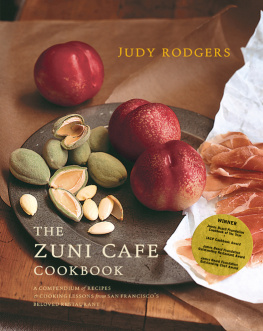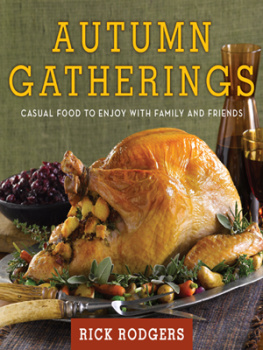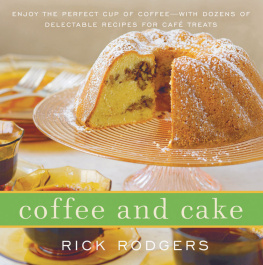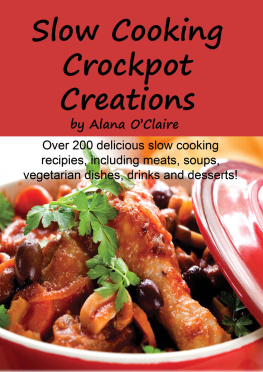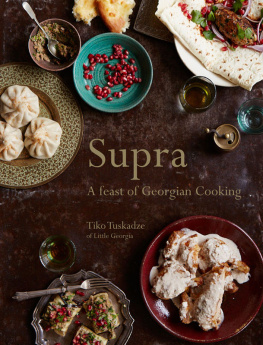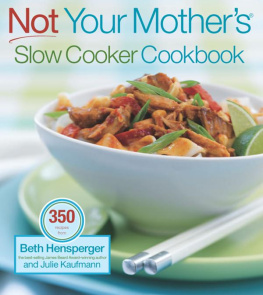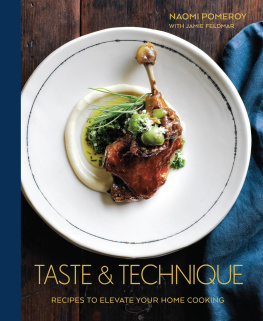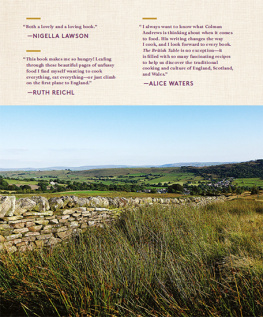
Mfie-toi du cinma dans la cuisine
~Jean-Baptiste Troisgros

CONTENTS




Z UNI CAFE OCCUPIES AN UNLIKELY TRIANGULAR SPACE IN A 1913 BUILDING AT THE corner of Rose Alley and Market Street in San Francisco, a few blocks to the wrong side of Civic Center. The front door opens into a gaping bar with two-story window walls framed by a handful of brick and iron columns. Liquor and wine bottles are improbably arrayed against the Market Street glass. During the day the natural light is stunning, and after dusk the space glows like a jeweled box from two blocks away. The restaurant feels barely contained. Its not fancy, there are no expensive finishes, just handsome spaces. When there are just a few customers, the space is airy and relaxing, a haven for reading or chatting over drinks and a simple plate of anchovies or a comforting bowl of polenta. When its crowded, the room warms to the bustle and excitement, and the same austere plate of anchovies or shaky tower of shoestring potatoes becomes part of the glamour. A mezzanine dining room overlooks this bar and leads to a warren of smaller dining rooms, mostly more intimate, although one offers a birds-eye view of the kitchen below. Sixteen tables skirt the wide-open kitchen, face a glowing hearth, and back up to a dozen more slender, twelve-foot windows on Market Street.
I was smitten on sight when I walked into Zuni in 1987. Id been offered the chefs job, and suspected it could be a good place to serve the mostly regional French and Italian food I adored. The crowd was eclectic~young, old, middle-aged, dressed up, dressed down, in noisy groups or quiet deuces, some there for the place, some for the drinks, some for the food, some for each other. I took in the space and imagined you could eat as simply or as grandly as you wanted in this setting, and that the food would only be a part of the seduction. Zuni was a wonderful gathering place, it had a sense of romance and felt as if it had been there forever.
FIFTEEN YEARS LATER, I USUALLY ENTER THROUGH THE BACK DOOR, WHERE MOST OF the romance is tamed by the realities of running a busy restaurant. Deliveries are late, the dishwasher breaks down, were short a thousand napkins on a Saturday, one hundred fifty chickens come in four ounces too small. The glowing hearth and brick oven require constant maintenance, the graceful window walls get broken, and, in earthquake country, beautiful old brick pillars require costly seismic braces. And yet, in that engaging setting, many thousands of clients, and well more than a hundred cooks over the years, have sustained our mostly traditional repertory. Love of those culinary traditions, both familiar and obscure, and the cultures and remarkable individuals that have nurtured them, drives our cooking. {Even where our techniques are unconventional~for example, we salt most proteins in advance, and we dont skim the fat off stock while it is cooking~it usually turns out they are seeded in traditional cooking habits.} And the privilege of working with a generous variety of organic products year-round has been a defining force. Receiving these treasures has been a constant delight, and the task of showing them at their best is one of my favorite responsibilities. Seeking just the right preparation to magnify the charms of a knobby potato, skinny stalk of asparagus, or the first freshly shelled walnuts of the year is always a happy challenge, especially when the ingredients are so good they need little done to them. In this context, I rediscover daily that the best dishes are the result of honoring the ingredients, continually tasting, and heeding not just the season, but also the weather outside, which has an immeasurable effect on how well a dish works. Like much of what is thought of as culinary wisdom, this sense of what to cook, and when, is distilled through experience and is a pleasure to acquire. The other bits of culinary knowledge that guide me daily are mostly the casual gifts of many teachers and fellow cooks, and such shared wisdom, coupled with simple observation and an interest in food chemistry, is at the heart of all my methods.
The recipes here represent our entire repertory: a battery of appetizers; a group of mostly leafy salads; the hot dishes that make a hearty middle course or a comforting one-course meal; a collection of vegetable dishes, preserved things, and sauces; the fish, poultry, and meat-centered preparations they interchangeably complement; suggestions for after-dinner cheese; and, finally, desserts. You will find a number of labor-of-love-intensive dishes; having made them hundreds of times, weve learned which extra steps guarantee depth of flavor, making the extra minutes more than worthwhile. But most often these dishes take their time, not the cooks time. Many other recipes call for little active work and require only the skill and will to select excellent ingredients, perhaps the most useful culinary skill of all. These simple dishes, celebrating the particular affinity of two or three ingredients, can either stand alone or quietly frame more elaborate dishes in a meal. I have included recipes that, while obscure sounding, are representative of our cooking, have consistently proven satisfying, and show not just what, but how we cook, and how to change a dish to suit your ingredients and palate. A number of the recipes may sound inconvenient~for example, most of you wont rush to start deep-frying, or stuffing sausage first thing after skimming these pages~but with just a little experience, both become fun. Like the restaurant, this book asks you to consider trying something unfamiliar, along with that friendly, popular roast chicken~if not right away, then as you become more intrepid.
The best meals are more than a succession of great dishes resulting from a number of great recipes. They are fashioned with wisdom and experience and are shaded, always, with spontaneity. So dont chart every turn before going to the market, and dont feel you must follow a recipe slavishly. As you use this book, choose a few recipes, or suggestions, that appeal to you~then shop with those in mind, but be prepared to change plans if the market doesnt deliver or the weather changes abruptly. As you cook, taste constantly, watch closely, smell and touch the ingredients as they change, and then adjust~for your palate, for the weather, for the ingredients, for your equipment. Make dishes more than once, and pay attention to the slight or substantial differences in each variable and how each affects the results, for the better or the worse. This effort, more important than any recipe, rewards even the most experienced cook with insights and surprises. Recognizing the little differences in ingredients, and learning how to optimize them rather than dilute or ignore them, is a mantra in the kitchen at Zuni. Along with sharing our repertory, I hope to show that this approach to cooking is not only accessible to everyone, but is also fun, and essential to producing consistently delicious food.
Next page
